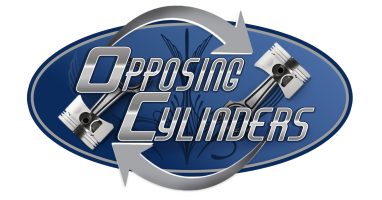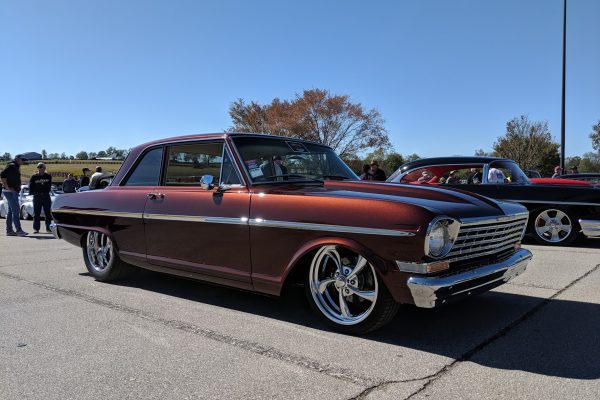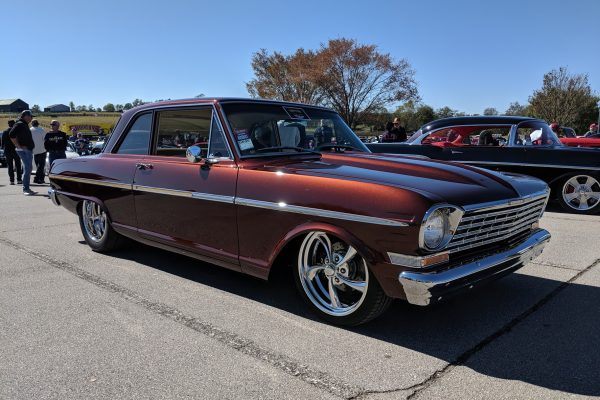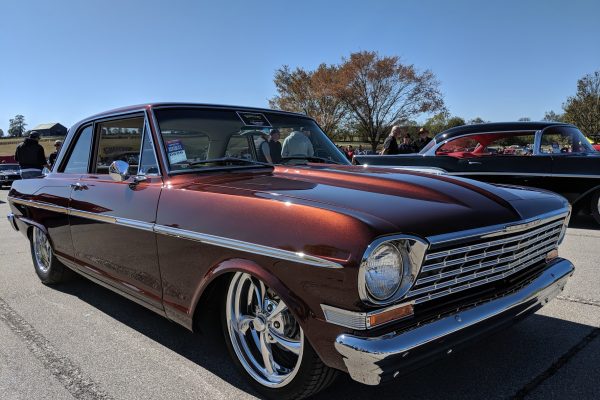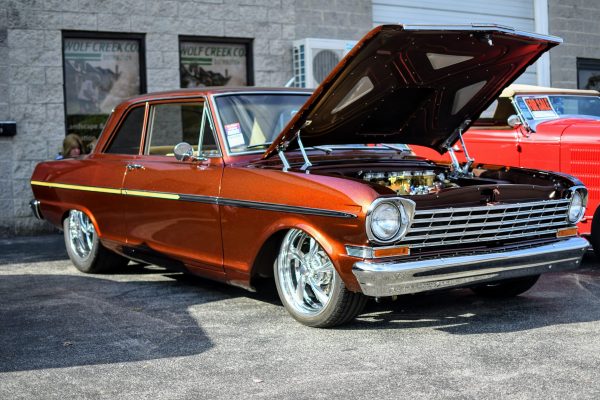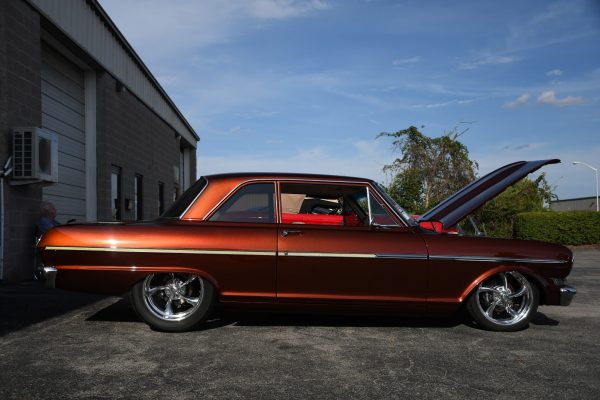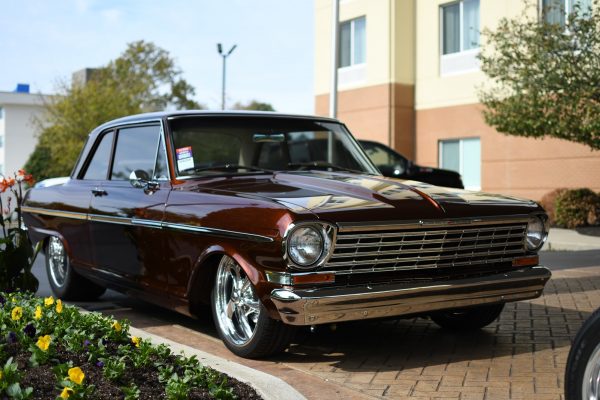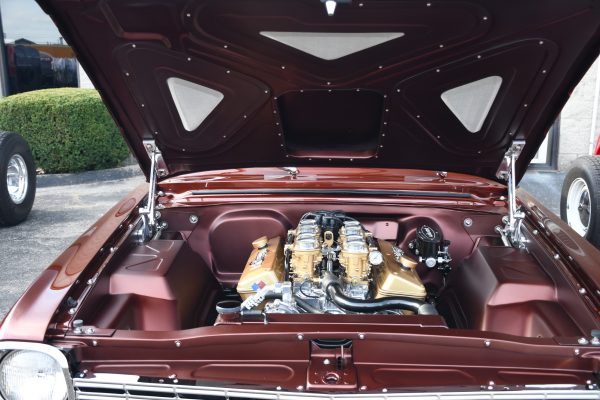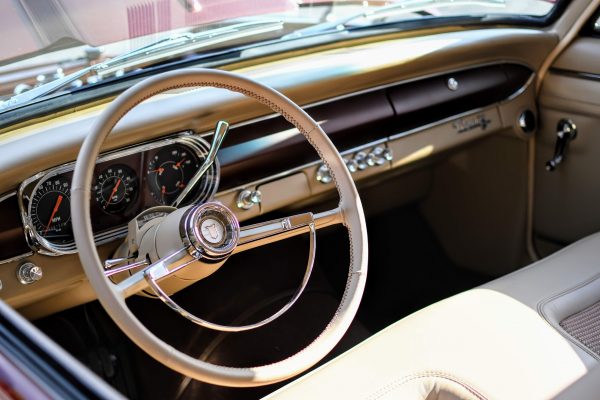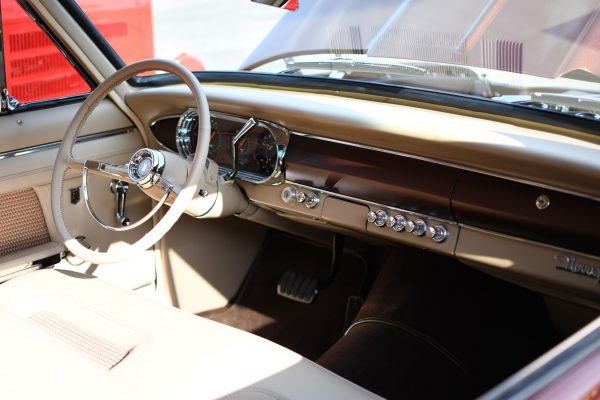The history is mostly what you have previously heard, it is Shari’s first car. Her dad bought it for $50 when she was in high school and made some body repairs and painted it. The Nova had survived the 1974 Xenia tornado, so the body work done by her dad, shall we say wasn’t to a professional level. In the late 70s, armed with some Bondo I attempted to do some “body work” on the hundreds of hail dings left by the tornado, and it too wasn’t professional grade either!
Originally it had a 194 c.i. straight 6 with a powerglide. The Nova was Shari’s daily driver to school and jobs for several years, we had become married in the meantime, then I started driving it. The Nova was used regularly through the 1980’s, then as sometimes happens it literally was slid to a corner of the garage. By the time this happened the body was getting rough and the interior was sad also. Life happens, and it sat for years waiting patiently for its time to be updated and be on the road again.
A couple of years before a “milestone” birthday for Shari, I thought I would get it back on the road and surprise her on that day. Life was still happening, and I knew I didn’t have the time or skills to get it done in time for the big birthday. So after contacting Mac at Lo-Man Rods, it was decided they would do the rebuild. Like you hear over and over, “well one thing leads to another” and it turn into a multi year project.
I, had joked with people and said that when the Nova gets redone the only thing that will be original on it will be the title! But I was wrong, the roof, dash and one door is still from the factory, though they all have been “freshened up” or reworked, especially the dash. Which, if you are not really into Nova’s, you may not even notice the changes that were made.
Lo-Man Rods handled the chassis by installing a Scott’s front clip, and then “Z ed” it to get the stance right. Then it was mini tubed and a complete 4-link rear suspension and frame built, including a rear cross member with integrated driveshaft hoop. All tied together by using round tubing running along the rockers to make a full chassis setup. The car doesn’t have air suspension, so the ride height is what you see in the pictures. One thing I thought was needed was a way to get over driveway aprons and speed bumps at low speeds, so a set of JRI hydraulic shocks was added to the front end to be able to raise the front up approximately 2 1/4 inches when needed.
I guess I have rambled on, but this is the first time I have put any info about the Nova down on paper and I guess I really should get its story together. Obviously Lo-Man’s gets credit for most everything on the car as far as help on planning, engineering, assembly and finish. So I will just list some of the major components and places used on the build.
– 383 ci strocker motor – Blueprint
– Induction – 8 Weber carburetors on polished intake, by Jim Inglese, Lake City Fl.
– Transmission – A 200R was reworked to handle the horsepower of the engine.The reason a 200R was used is its smaller in size, trying to keep the interior floor space as open as possible. That being said the trans tunnel still had to be made larger then stock, but not as much as it would have been with other transmissions.
– Rearend – Ford 9′
– Brakes – Four Wheel Disc – Wilwood
– Interior – Hide Originals – John Miller, New London Oh.
– Air – Vintage Air
– Gauges – Classic Instruments
– Tilt Column – Flaming River
– Steering Wheel – Evod Industries
– Sound – Sirius Radio (hidden under dash) with 6×9 speakers in kickpanel and rear shelf
– Bumpers – Have been tucked in tighter to body and front bumper has had licence plate recess removed. – Lo-Man Rods
– Chrome Plating – Custom Chrome Plating – Jon Wright, Grafton Oh.
– Wheels – Billet Specialties – Front 18×7 Rear 18×10
– Exhaust – Lo-Man Rods
– Paint – PPG Rootbeer over purple base – Lo-Man Rods – Mac Nicewander, Tipp City Oh.
The overall goal was to have the car look close to what Chevy could have built in 1964 with some refinements. I keep the idea of “period appropriate” on the decisions being made. One of the biggest decisions was using Weber carburetors under the hood, which was used in the 60’s, but also are still being used today as well. Hardly anything was shaved, which turned out to be more difficult by finding and replacing or repairing some of these features. Items such as drip rails, front and rear windshield moldings, mirrors, grill and trunk moldings have all been chrome plated and retained to keep a factory appearance. The rear wheelwell openings were lengthen but still remain stock looking. The door locks were moved to aid in probably the biggest visual change, the body side moldings, which is 1964 Impala molding with gold inlay for contrast against the rootbeer paint.
The interior retains the column shift, rear seat and the original style bench seat in the front, along with the upholstery being a period appropriate pattern using a woven leather for the seat inserts. An interior feature that can’t be readily seen is LED lighting in the door panels that is carried into the trunk area.
